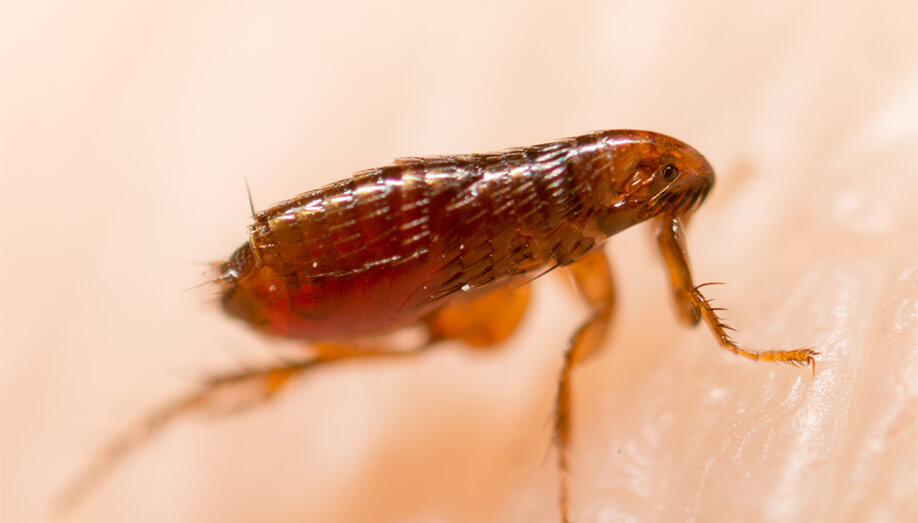
“Flea” is the common name in the order Siphonaptera, which includes over 2500 species. They are very small, and are modified for a parasitic existence with a tough cuticle, no wings, no compound eyes, and legs made from jumping.
Identifying the Different Types of Fleas
The size of a flea varies from 1-3mm, based on each different species:
Cat Fleas (Ctenocephalides felis)
- Most common type of fleas
- Transmits flea-born typhus
- Found on dogs as well as cats
- Can carry plague bacteria
Dog Fleas (Ctenocephalides canis)
- Generally specific to dogs (as opposed to cat fleas, which affect both cats and dogs)
- Spreads tapeworm to dogs, cats, and occasionally humans
- Much less common than cat fleas—can only tell the difference under a microscope
Bird Fleas (Ceratophyllus gallinae)
- Also known as Chicken Fleas
- Most prevalent where birds and their dens are established
- Bird fleas always face the light and when a shadow is cast, they jump to find a new host
Signs of a Flea Infestation
Do you suspect an infestation of fleas in your home? Here are some signs of an infestation:
- Visual sightings of fleas jumping on carpet or furniture
- Dark, insect-like spots on pets
- Excessive itching or scratching (both pets and humans)
- Alopecia (sudden hair loss)
- Bite marks that leave welts or red patches on skin
- Pale gums in animals (a possible sign of anemia)
- Itching, rashes, or other allergic reactions
Another creative way to determine if you have a flea infestation is to do a “White Sock Test” by putting on a pair of white socks and shuffling your feet across the floor; if there are fleas, this will cause them to hop up and catch a ride.
What You Can Do About a Flea Infestation
Fleas are not easy to get rid of once you have an infestation in your home, but there are several things that you can do that will help in controlling the spread and aid in gaining control over them.
The most important among these methods is to VACUUM! 96% of all four flea stages are killed after vacuuming. Be sure to empty your vacuum in its own tightly secured bag, and remove it from your home immediately to avoid the continual spread of these insects.
Additionally, here are a few more DIY tips you can try:
- Always vacuum first!
- Diatomaceous earth + baking soda + salt (works to dehydrate them)
- Herbal Flea Spray
- 4 L Vinegar
- 2 L Water
- 500 mL Lemon Juice
- 250 mL Witch Hazel
None of things will completely eradicate fleas on their own, but they can help keep it from turning into a bigger infestation.
If you’ve just tried everything you can think of and you’re feeling overwhelmed, call your local pest control company for help!

